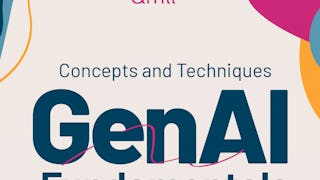Dive into the fascinating journey of artificial intelligence, from its theoretical beginnings to today's powerful generative models. This course offers a unique perspective on how AI has transformed over decades, highlighting the crucial developments in deep learning that paved the way for modern AI breakthroughs.


Recommended experience
What you'll learn
Trace the evolution of AI from its early concepts to modern generative model
Identify key technological breakthroughs that enabled the rise of generative AI
Skills you'll gain
Details to know

Add to your LinkedIn profile
2 assignments
See how employees at top companies are mastering in-demand skills

There are 4 modules in this course
Meet the instructor, Prof. Jesse Spencer-Smith, and find out about how we'll learn the history of AI and gain insight into the future.
What's included
1 video1 reading
Let's take a trip through time and look at how AI has changed over the years. You might be surprised to learn that we've been talking about "AI" for over 60 years! But here's the funny thing - what we've called AI has changed drastically. In this lesson, we're going to explore the journey from the very first discussions about machine intelligence all the way to the chat assistants we have today. We'll look at the key players, the breakthrough moments, and the times when AI hit roadblocks. You'll see how the goals and approaches of AI shifted, even though we kept using the same term. Understanding this history isn't just about looking back - it's crucial for grasping why today's generative AI is such a big deal. So buckle up - we're about to dive into the fascinating story of how we got from early computers to machines that can chat, create, and reason.
What's included
2 videos
In this lesson, we're going to explore why generative AI represents such a significant leap forward in the field of artificial intelligence. We've been working on AI for decades, but recent developments have led to breakthroughs that were once thought to be years away. We'll examine the key advancements that have enabled this shift: a powerful new learning algorithm, the innovative approach of self-supervised learning, and the impact of scaling up our models. These elements have come together to create AI systems capable of tasks that were previously considered extremely challenging or even impossible. By understanding these core developments, you'll gain insight into why generative AI has become so prevalent and powerful. We'll discuss how these changes have resulted in AI that can generate human-like text, create art, and even write code. By the end of this lesson, you'll have a clear understanding of what sets generative AI apart and why it represents a fundamental shift in artificial intelligence capabilities. Let's dive into the technologies that are driving this AI revolution. CopyRetryClaude can make mistakes. Please double-check responses.
What's included
2 videos
In this final lesson, we explore the cutting edge of generative AI and peek into its future. We'll examine the architecture of decoder transformers - the engines powering today's most advanced AI models - and uncover how relatively small changes in training can lead to dramatically different capabilities. You'll learn about the latest developments like instruction fine-tuning and AI agents, and understand why smaller, more efficient models are on the horizon. We'll also discuss the profound implications of generative AI for businesses and individuals, including the concept of "opportunity liability" and the democratization of technical skills. By the end of this lesson, you'll have a clear picture of generative AI's trajectory and be well-equipped to anticipate and leverage future developments in this rapidly evolving field.
What's included
2 videos2 assignments
Instructor

Offered by
Explore more from Machine Learning
 Status: Preview
Status: PreviewBoard Infinity

Alberta Machine Intelligence Institute
 Status: Free Trial
Status: Free Trial Status: Preview
Status: PreviewUniversity of Colorado Boulder
Why people choose Coursera for their career





Open new doors with Coursera Plus
Unlimited access to 10,000+ world-class courses, hands-on projects, and job-ready certificate programs - all included in your subscription
Advance your career with an online degree
Earn a degree from world-class universities - 100% online
Join over 3,400 global companies that choose Coursera for Business
Upskill your employees to excel in the digital economy
Frequently asked questions
To access the course materials, assignments and to earn a Certificate, you will need to purchase the Certificate experience when you enroll in a course. You can try a Free Trial instead, or apply for Financial Aid. The course may offer 'Full Course, No Certificate' instead. This option lets you see all course materials, submit required assessments, and get a final grade. This also means that you will not be able to purchase a Certificate experience.
When you purchase a Certificate you get access to all course materials, including graded assignments. Upon completing the course, your electronic Certificate will be added to your Accomplishments page - from there, you can print your Certificate or add it to your LinkedIn profile.
Yes. In select learning programs, you can apply for financial aid or a scholarship if you can’t afford the enrollment fee. If fin aid or scholarship is available for your learning program selection, you’ll find a link to apply on the description page.
More questions
Financial aid available,

